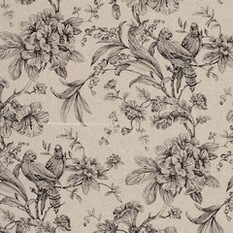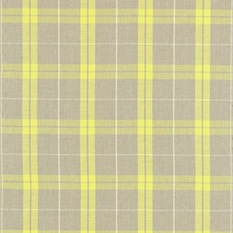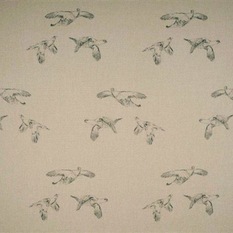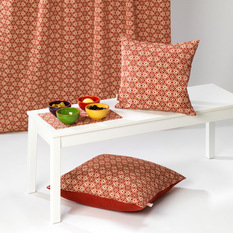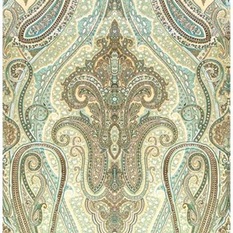Product Category
Style
Country
2,911 Fabric
Although we might all jump at the chance to replace furniture with newer, trendier models, sometimes a good-quality piece just needs a fabric revamp. The right upholstery can easily transform the look and feel of your dining room, living room or home office furniture, which is why it's a popular DIY alternative to furniture shopping. There are many different textures, colours and patterns to choose from, including cotton, leather, linen, silk, wool and polyester, so be sure to consider what makes sense for your family, as well as what complements your room's decor. If you're on the verge of reupholstering your furniture, some prior research will ensure you pick the right fabric. Here are some considerations to help guide you: More
Sponsored Products
Ballard Essential Drapery Panel - Khaki Twill 96 Inch
USD 69.00 | Ballard Designs
Brooklyn Orchid 22-inch Indoor/ Outdoor Corded Ottoman with Sunbrella Fabric
USD 169.99 | Overstock.com
Campagna Toile Sham - Standard
USD 39.00 | FRONTGATE
Eton Chaise
USD 1,099.00 | Ballard Designs
Monticlair Chaise
USD 1,099.00 | Ballard Designs
Standard Toile Sham - BLUE
USD 32.00 | Horchow
What type of fabric is available?
There is a wide range of fabric that can be used for upholstery. They generally fall into two categories: natural fabrics and synthetics. Here is a brief overview of several common fabrics:
Natural Fabrics:
Cotton: Cotton is durable and resistant to wear, fading and pilling, but not as resistant to dirt and wrinkling. Cotton can go from casual to formal depending on the weave.
Cotton blend: Cotton blends are slightly more durable than cotton due to the mix of additional fibres.
Leather: Extremely durable and functional, leather wears well and gets better with age.
Linen: Resistant to pilling and fading, linen provides a crisp and casual look to furniture. However, it wrinkles and shows dirt easily.
Silk: This elegant fabric will add a sophisticated and formal touch to furniture. Due to its delicacy, its best for light use and requires professional cleaning.
Wool: Blended with synthetic fibre for easier maintenance, wool is durable while also being resistant to pilling, fading, wrinkling and soil.
Synthetics:
Acetate: Developed as imitation silk, acetate is resistant to pilling and shrinking, however it doesn’t hold up well for everyday use due to its tendency to wear, wrinkle and fade in the sun.
Acrylic: Developed as imitation wool, acrylic may pill easily if not of high quality. However, it’s softer than natural wool, and is resistant to wear, wrinkling, dirt and fading.
Microfibre: Made from polyester fibres, microfibre is similar to suede (may also be known as suedette) and is durable, affordable and easy to maintain.
Nylon: Nylon is often blended with other fibres, creating a durable fabric that won’t wrinkle or soil but may fade and pill.
Polyester: Usually found in a blend with other fibres, polyester is resistant to wrinkling and fading.
Rayon: Though prone to wrinkling, rayon is durable and affordable.
Vinyl: Durable and affordable, vinyl is a more affordable option compared to leather.
Which fabric should I choose?
Consider the style of your furniture as well as its function to help when choosing the type of fabric. Is your furniture in a traditionally themed living room that is only occasionally used? Consider the luxuries of silk; its gorgeous appeal will be eye-catching, though it’s not very durable. Are you looking to outfit the casual family couch that’s used on a daily basis? Look for a cotton blend or a microfibre that are resilient and sturdy and will endure years of constant use. A good measure is thread count: the higher the thread count, the longer it will last.
What fabric pattern and colour would work for my furniture?
The kind of fabric you pick out is mostly dictated by your style. Neutral tones and floral prints work well in a traditional space, while bright colours and bold patterns give off a more contemporary vibe. Your lifestyle also dictates your design. For example, if you have small children or pets, you might want to steer clear of white. As you pick out your upholstery, try to avoid too many patterns or colours. It's great to have interesting, unique furniture, but using a wide variety of prints can overwhelm and consume the space.
How do I protect my upholstery from sunlight?
If your couch is sitting in a constant stream of sunlight, you’ll want it to be upholstered in something that is fade-resistant. Cotton, linen, acrylic, and polyester are all good fade-resistant options. If you prefer a different material, be sure to mostly keep blinds closed or keep furniture pieces away from windows.




